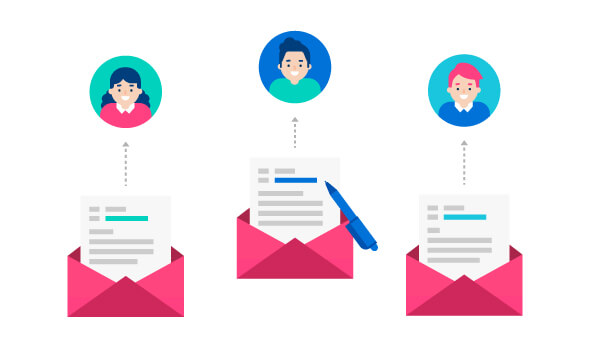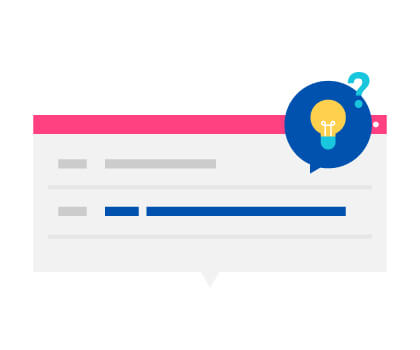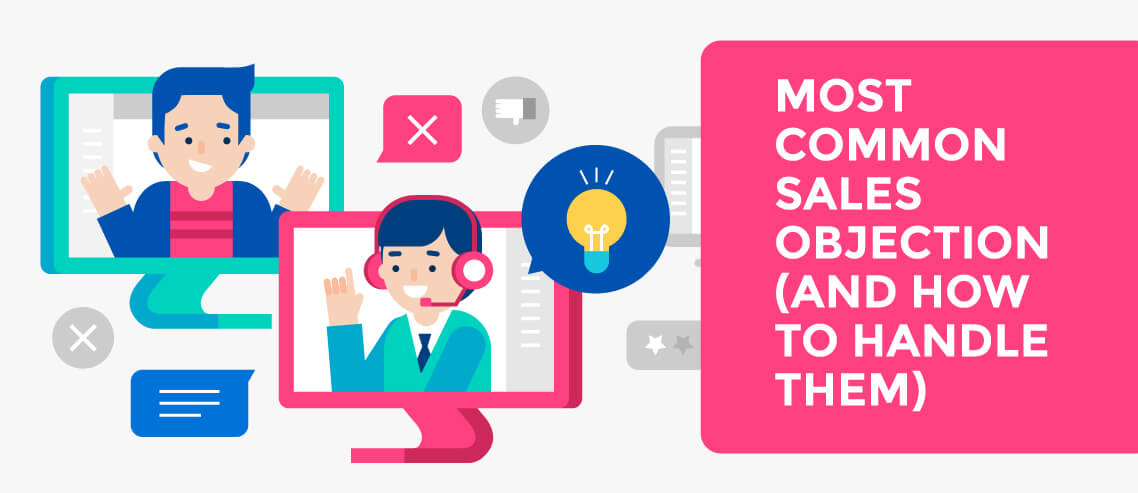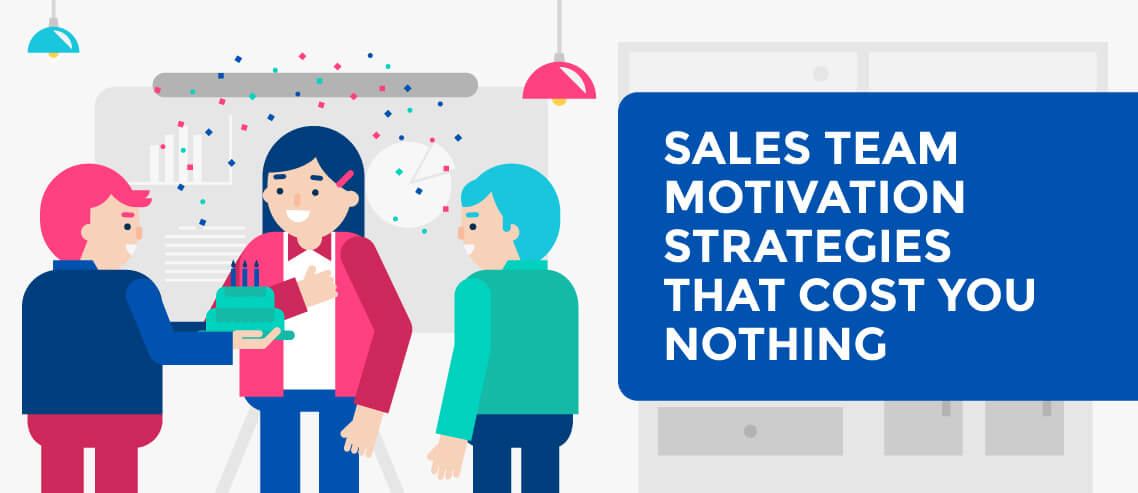8 Subject Lines That Will Get That Networking Email Opened

Contents
There’s a right way – and a wrong way – to write subject lines for every kind of email. Some types, like networking emails, often get pushed aside in favor of something more ‘important’. But the fact is, sending an email to someone you met at a recent conference can be just as crucial as a sales email. After all, networking events can mean huge opportunities for your business.
The networking email is a great way to connect with experts in your field, colleagues, or other individuals you would like to get to know better. A networking email strategy requires both an introduction and a timely follow-up email with a subject line that grabs your recipient’s attention and keeps it.
Just like a headline should sell a story, a subject line should inspire action. Around 35% of email recipients open an email based on the subject line alone, while 69% of email recipients report email as spam based on that same subject line.
To keep your email out of your recipient’s spam folder or trash, it’s critical to perfect the art of the networking subject line. Here’s how.
The Key to Networking Subject Line Success: Personalization and Thoughtfulness
The majority of marketers say that targeted personalization increases customer engagement. Personalized emails improve click-through rates by an average of 14% and conversions by 10%, and emails with personalized email subject lines are 26% more likely to be opened.
Even though the individual receiving your networking email might not be a customer, it will still have a positive impact. That’s because using the recipient’s name or mentioning an interest of theirs shows that time and effort were put into creating the email. Generic emails and responses can be sent to anyone, but personalized emails are unique and thoughtful. Remember, personalization drives connection.
To create this connection, you have to focus on learning more about others and discovering how to speak their language. In other words, you have to put the recipient first.
Automate Your Outreach
Building a network via email outreach requires balancing personalization with volume.
“Spraying and praying” will come off as inauthentic, exactly the opposite of what you’re trying to do when you’re networking. On the other hand, you realistically need to be connecting with enough people for your network to grow at a meaningful rate.
That’s why a platform like Mailshake is essential to creating an effective, scalable networking email outreach sequence.
With Mailshake, you can:
- Personalize your emails in bulk with powerful mail merge features
- Reply to leads straight from your Mailshake dashboard with Lead Catcher
- Schedule follow-up emails that are paused or triggered based on whether a recipient opens an email, clicks a link or replies
- Set the amount of time between follow-ups (5 days between the first and second email, 7 days between the second and third, etc.), and the days and times you want them to send (for instance, between 8 am and 6 pm on weekdays)
It’s easy to optimize your copy and overall outreach strategy by A/B testing different email subject lines, body copy, and full campaign sequences. And with native integrations to your CRM, and third-party integrations to hundreds of software tools via Zapier, you can automate your outreach even further by triggering campaigns when someone downloads an eBook, books a meeting, or signs up for a demo.
If social media and the phone are a part of your outreach cadence, you can include those touchpoints in your outreach sequences as well with Mailshake Sales Engagement.
Bottom line: personalization and scale are both absolutely essential to an effective outreach strategy and should be a main goal for you, but there’s no reason why you can’t automate it.
Best Practices for Writing an Eye-Catching Email Subject Line
Here are some general rules to follow when crafting an email subject line. Follow these guidelines, and you’ll increase your chances of getting a quick response. (Don’t make these bad email mistakes!)
No time for careful crafting? Throw your subject line and email into our email copy analyzer to get real-time analysis and improvements.
Keep Your Headline Short and Attention-Grabbing
The ideal length for subject lines should be around three to four words, or about 17-40 characters in length. This length both keeps the email recipient’s attention and keeps your subject line from getting cut off in the subject line preview. Although this length will vary by email application and device, it’s a good rule of thumb to follow.
Make It Personal
A recent study showed that subject lines with the recipient’s name increased the chances of the email being opened by nearly 50%. It’s an easy way to get the point across that this email is personal and relevant to them.
If you don’t feel comfortable using their name yet, especially if they are a complete stranger, try to add something personal and relevant to them in your subject line. For example, you could use the title of a recent publication they wrote for or mention a common interest you share.
When Following Up, Spark Their Memory
In your follow-up email subject lines, be sure to reference your past meeting or conversation. This helps your recipient remember who you are, and what steps you had hoped to take next.
Use the strategies above, and keep your email short and personal. If you didn’t feel comfortable using their name before, follow-up emails are a great opportunity to try it out.
And finally, avoid the words “invite,” “join” and “confirm.” Ironically, these words have been shown to be highly ineffective in email subject lines.
Creativity comes from constraint, so try drafting out a few different versions. For a quick way to check that your subject line will be successful, give it a final review with our Email Copy Analyzer. Our tool works to improve deliverability, readability, and of course – to help get your email opened in the first place.

8 Examples of Email Subject Lines to Try
Introduction Email Subject Lines
What’s one of the first things you do when meeting someone new? Chances are, it involves a handshake. Consider your introduction email to be the handshake between you and the other person. You can’t look them in the eye, but you can deliver a first glance using a personalized intro email.
The intro email does more than just communicate your name. It sets the stage for future communication and helps the reader get to know you better. As the start of what could be a meaningful relationship, this email is important to nail. And it all starts with a compelling subject line.
Subject Line #1: Fellow [insert interest here] who would love to connect
Vague subject lines are often considered spammy. The first step is to create a subject line that states exactly what the goal of the email is, before the reader even opens it. The second step is to personalize to set your email apart. This subject line uses a common interest to drive connection and grab the reader’s attention.
It’s the perfect line for a warm lead or someone you already have some sort of connection with. Keep an eye on their social media to find common ground. Did your reader recently share a blog post about knitting? “Fellow knitting enthusiast here who would love to connect” is the perfect opening line.
Subject Line #2: Interested in learning more about your recent article on [insert publication]!
Everyone likes to be recognized for their accomplishments. The perfect way to warm up an email is to do a quick search or visit your reader’s LinkedIn page to find articles and blog posts they’ve written or were featured in. The key here is to find one you particularly enjoyed and want to know more about. This will ensure your email is genuine and doesn’t sound forced.
Reading their recent article, blog post or book shows that you’ve taken the time to learn more about them, prior to reaching out. It shows effort and gives them even more reason to return the favor.
Subject Line #3: Looking for advice from a [insert industry here] expert
Most individuals are more than happy to give advice and help others with their know-how. It’s empowering and builds confidence. Subject line #3 gets your email opened by piquing the recipient’s interest about what you’re going to ask. This kind of email subject line is beneficial to you as well, as you’ll likely learn something new in addition to gaining a new networking relationship.
The best part? This subject line works for all industries, from marketing to the manufacturing industry. But before you hit send, make sure you’re asking a clear question that gives them something to respond to, and that you’re genuinely interested in the answer. Simply using this subject line to entice and not gain advice is a recipe for spam.
Subject Line #4: I totally admire the [insert thought, idea or opinion] you shared
Connecting with someone is easier when you share a common idea, thought or opinion. This subject line tells the reader that you follow them, agree with them and just want to give them a boost of confidence – even if the email asks for more. The key is to find like-minded individuals who share common ground.
Susan Ward of The Balance states:
“Most business people are optimistic and positive. Regularly associating with such people can be a great morale boost, particularly in the difficult early phases of a new business. If you are not naturally outgoing, regularly meeting new people can also boost your confidence and on a personal basis you may form new friendships with like-minded people.”
Follow-Up Subject Lines
Did you know that 70% of unanswered email chains stop after just one message? That means that most senders give up after the first try.
Whether you’re sending sales emails or a networking email, the key to success is the same: You must place priority on the follow-up. Once again, subject lines sell emails.
Like the initial email, your follow-up email should have a subject line that’s just as inspiring. You want to use the right hook that keeps people’s attention. The use of a catchy subject line is just one of the key components for the purpose of a networking email.
Subject Line #5: Loved our chat. Just following up from [insert place].
The follow-up email is also important to send after phone calls, meetups, in-person introductions and networking events. After a good first impression or, better yet, a great conversation with someone, you don’t want to send email content that diminishes the initial conversation. Instead, use a follow-up email to emphasize it.
Start by reminding the reader how much you enjoyed your conversation. This is a great example of breaking the ice even further. It establishes gratitude from the beginning and adds warmth to your email. Then, clue your reader in to who they’re receiving an email from by mentioning the event you spoke at or the coffee shop you met at.
Subject Line #6: Hey [insert recipient’s name], this is [insert your name]
It can’t get any simpler than this. Effective subject lines get straight to the point but add a higher level of personalization by using both your name and the reader’s name. It takes the guesswork out of who sent the email, getting it opened instead of lost in the spam folder. It also adds a level of mystery, enticing your reader to click to discover what could be inside.
Subject Line #7: I enjoyed our meeting at [insert place]. I’d love to reconnect!
Just like the example above, this subject line helps differentiate who you are from the start by adding the location of your last communication. It also tells your reader that you enjoyed that connection and would love to do it again sometime. Plus, this follow-up states your goal from the beginning, before they even click to open.
Subject Line #8: Hey there, [insert name]!
We have seen the “hello again” email in our own inboxes before. To keep things fresh, this line is a spin-off of that subject line, adding a bit of personalization that looks less spammy and more intentional. It’s simple and effective, perfect for the busy lifestyle of a business owner.
Get the Conversation Going
Whether you’re sending an introduction email or you’re following up, the goal of a networking email is to get the conversation going. Using email personalization can do three key things:
- Make the subject line stand out as highly relevant and important
- Increase the likelihood of an email being opened
- Strengthen the reader’s experience
The perfect networking email subject line captures attention, speaks directly to your reader and inspires action. And the perfect networking subject line should include personalization. Using these examples will ensure that your communication builds a new relationship instead of ending up in the trash.
Check out this short video on How to Write Subject Lines & Opening Email Copy:
Networking Email Subject Lines FAQs
What is a networking email subject line?
Networking emails are intended to lay the groundwork for a mutually beneficial new relationship. The subject line will almost always be the first part of the email that the recipient reads, so it must compel them to click and learn more.
What should I put in a networking email subject line?
Your task is to personalize your networking email subject line as much as possible in no more than 40 characters. Beyond just mentioning your prospect’s name, try to include something memorable, like the name of the event at which you met them, or the theme of a blog post they’re recently published.
What does a good networking email subject line look like?
Effective subject lines are those that increase the chances of the message being opened, appear highly relevant and important to the recipient, and strengthen the reader’s experience. They should speak directly to the prospect and inspire action, while being concise and punchy.
What is an example of an effective networking email subject line?
While the “ideal” subject line will vary from one prospect to another, a great example is: “I totally admire the [insert thought, idea or opinion] you shared.” It tells the reader that you engage with their content and respect their opinion, which gives you scope to ask for something in the email.





